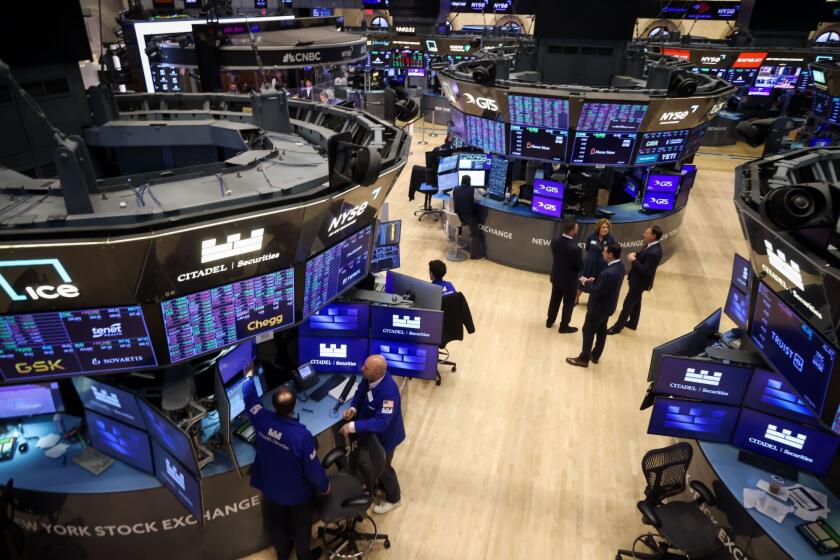Inflation Fears Vanishing as Wholesale Prices Decline
- Share via
WASHINGTON — Falling food and energy costs cut wholesale prices by 0.3% last month, an encouraging sign that inflation remains under control, the Labor Department reported Friday.
After a flurry of concern last fall about a potential resurgence of inflation, economists and business executives are now confident that prices will remain stable.
“We don’t need to worry about inflation,” said Richard Rahn, chief economist for the U.S. Chamber of Commerce.
Index Up 2.2%
For all of 1987, the producer price index rose a modest 2.2%, compared to the extraordinary decline of 2.3% during 1986, when oil prices plunged.
The government’s measure of wholesale costs is considered a harbinger of the inflation that consumers will face in coming months.
December’s wholesale price drop was aided by a 1.3% decline in food prices, with beef, poultry and fish all costing less than in the previous month. Fresh fruit and vegetable prices, which had risen sharply in November, plunged by 11% last month.
Marked declines in gasoline and home heating oil costs helped drive down the overall price of energy products by 1.9%. Oil exporting countries have been unable to agree on effective steps to restrict production, and oil prices have remained depressed.
With wholesale prices relatively stable, inflation for consumers, measured by retail prices for goods and services, was running at an annual rate of 4.7% during the first 11 months of the year. That is within the 4% to 5% range that most experts believe the economy can absorb without serious damage.
Rising Mortgage Rates
“It’s clear we’re not really on an accelerated path for inflation,” said Mark Obrinsky, an economist with the U.S. League of Savings Assns. “My expectation is that, sometime around the spring, we might start to see rising mortgage rates, but only very gradually.”
The favorable signs should ease worries in the Federal Reserve about the inflation threat and allow it to concentrate on assuring sufficient growth in the money supply to keep the economy expanding, economists said.
The “easing of producer prices should help calm financial markets, where inflationary expectations associated with the decline of the dollar were unrealistically high,” Jerry Jasinowski, chief economist for the National Assn. of Manufacturers, said.
After moderate increases through much of 1987, wholesale costs began moving downward in the fall and winter. They dropped 0.2% in October and were flat in November.
December’s continuation of that trend “is another stroke of good luck,” said Bruce Steinberg, an economist with the Merrill Lynch brokerage firm. “The price situation should be good for several months.”
Profit Margins Cut
Some economists had feared a surge in inflation because of the decline in the value of the dollar, which tends to push up the prices of imported goods. However, foreign companies, eager to keep their products competitive in the vast American market, apparently have been cutting into their profit margins rather than passing along all of the exchange rate effect to customers.
“You have to expect prices of imports to rise through the year,” said Roger Brinner of Data Resources Inc., a Lexington, Mass., economic consulting firm. “Most industries are competing intensively, however, so we are not in the inflation-pessimist camp.” He predicted a moderate 2.8% rise in wholesale prices this year. The index of producer prices closed the year at 296.8, meaning that a selection of goods priced at $100 in 1968 cost $296.80 last month.
Although food and energy cost less at the wholesale level last month, the price picture in other categories was mixed. Furniture, clothing, cosmetics and sporting goods all rose in cost, but automobile prices dropped for the second consecutive month.
More to Read
Inside the business of entertainment
The Wide Shot brings you news, analysis and insights on everything from streaming wars to production — and what it all means for the future.
You may occasionally receive promotional content from the Los Angeles Times.










